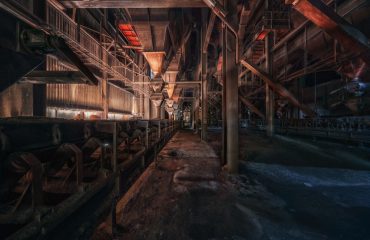The steel industry, a cornerstone of global manufacturing, is undergoing a profound transformation driven by digitalization. From raw material sourcing to final product delivery, technology is reshaping every facet of steel commerce, boosting efficiency, transparency, and sustainability. This post delves into the key areas where digitalization is making its mark, exploring the opportunities and challenges that lie ahead.
1. Streamlining the Steel Supply Chain with Digital Tools
The steel supply chain is notoriously complex, involving multiple intermediaries, geographically dispersed operations, and intricate logistics. Digitalization offers a powerful solution to streamline this complexity. Solutions like blockchain technology enable secure and transparent tracking of materials throughout the entire supply chain, from ore extraction to finished product delivery. This enhanced traceability improves accountability, reduces fraud, and allows for better inventory management. Furthermore, advanced analytics powered by big data provide real-time insights into supply and demand, enabling proactive adjustments to production and logistics, minimizing disruptions and optimizing resource allocation. The use of IoT (Internet of Things) sensors in factories and transportation allows for real-time monitoring of equipment and shipments, providing early warnings of potential problems and preventing costly delays.
2. E-commerce Platforms: Revolutionizing Steel Trading
Traditional steel trading relies heavily on manual processes, often involving lengthy negotiations and paperwork. The rise of e-commerce platforms is changing this paradigm, providing a more efficient and transparent trading environment. These platforms offer a centralized marketplace where buyers and sellers can connect directly, access real-time pricing information, and conduct transactions securely online. This eliminates intermediaries, reduces transaction costs, and speeds up the entire buying process. Moreover, e-commerce platforms often incorporate features like automated order management, electronic invoicing, and secure payment gateways, further streamlining operations and reducing administrative overhead.
3. Leveraging AI and Machine Learning for Predictive Analytics
Artificial intelligence (AI) and machine learning (ML) are increasingly being deployed in the steel industry to enhance decision-making and optimize operations. AI algorithms can analyze vast amounts of data from various sources – production data, market trends, customer behavior – to identify patterns and predict future outcomes. This allows steel producers to optimize production schedules, predict equipment failures, and anticipate market fluctuations, leading to improved efficiency and reduced costs. Moreover, AI-powered chatbots and virtual assistants can provide instant customer support, answering queries and resolving issues promptly, enhancing customer satisfaction and loyalty.
4. Enhancing Customer Relationships Through Digital Engagement
Digitalization offers significant opportunities to enhance customer relationships in the steel industry. Companies are leveraging digital channels like websites, social media, and mobile apps to communicate with customers more effectively, providing them with real-time information on product availability, pricing, and delivery schedules. Personalized marketing campaigns, powered by data analytics, allow companies to target specific customer segments with tailored offers and promotions. Furthermore, online portals provide customers with access to their order history, invoices, and other important documents, improving transparency and convenience.
5. The Role of Big Data and Analytics in Optimizing Steel Production
Big data analytics plays a crucial role in optimizing steel production processes. By collecting and analyzing data from various sources – such as sensors on production equipment, energy consumption data, and quality control measurements – steelmakers can identify bottlenecks, improve efficiency, and reduce waste. Predictive maintenance, enabled by big data analytics, allows companies to anticipate equipment failures and schedule maintenance proactively, minimizing downtime and maximizing production output. Furthermore, data analytics can help optimize the use of raw materials, reducing costs and minimizing environmental impact. This data-driven approach contributes to a more sustainable and efficient steel production process, aligning with growing industry demands for environmentally responsible practices.
The digital transformation of the steel industry is still in its early stages, but the potential benefits are immense. Companies that embrace digital technologies and adapt to the changing landscape will be better positioned to thrive in a competitive global market. The future of steel commerce is undoubtedly digital, and those who fail to adapt risk falling behind.
SEO Tags:
- Digitalization in Steel
- Steel Industry 4.0
- Steel Supply Chain Optimization
- Steel E-commerce
- AI in Steel Manufacturing




